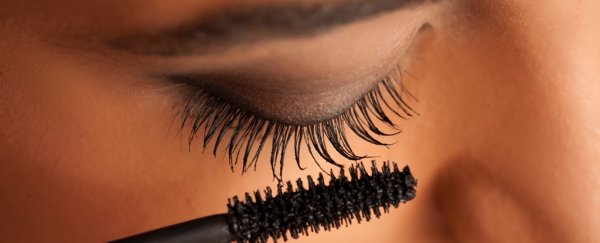A huge proportion of cosmetic products sold in the US and Canada have been found to contain high levels of fluorine, suggesting the presence of potentially harmful per- and polyfluoroalkyl substances (PFAS), also known as 'forever chemicals'.
PFAS are a group of thousands of human-made chemical compounds that have been used in the manufacture of many household and commercial products since the mid-20th century.
In more recent decades, research has shown that these long-lasting chemicals spread pervasively throughout the environment, and exposure to high levels of PFAS substances has been linked to harmful health effects in people and animals.
Despite the potential and still largely unknown risks posed by PFAS – in part due to the huge number of different compounds involved – many 'forever chemicals' are still found in common products in use today. This includes cosmetics sold in Europe and Asia, previous research has shown.
Now, scientists have discovered PFAS chemicals are also rife in North American cosmetics, with a new analysis of 231 cosmetic products available in the US and Canada revealing that 52 percent of the products tested contained high levels of the chemical fluorine, indicating the likely presence of PFAS.
"These are products that are applied around the eyes and mouth with the potential for absorption through the skin or at the tear duct, as well as possible inhalation or ingestion," says physicist Graham Peaslee from the University of Notre Dame.
"PFAS is a persistent chemical – when it gets into the bloodstream, it stays there and accumulates."
In testing, high levels of fluorine were found in all cosmetic product categories tested, including lipsticks, foundations, concealers, and many more.
 (University of Notre Dame)
(University of Notre Dame)
Waterproof mascara products were the category most likely to contain high levels of fluorine (with the chemical found in 82 percent of products tested), while various face products – powders, blush, bronzers, highlighters, primers, sprays – were the least likely (40 percent).
"High fluorine levels were found in products commonly advertised as 'wear-resistant' to water and oils or 'long-lasting' including foundations, liquid lipsticks, and waterproof mascaras," the researchers explain in their study.
While the presence of fluorine itself is only indicative of probable PFAS, a separate targeted analysis of 29 of the products – including foundations, mascaras, and lip products – confirmed that every item contained numerous PFAS chemicals (with between four and 13 chemicals detected in each one).
Despite the inclusion of PFAS chemicals in these products, however, their labels tell a different story, in contravention of US FDA requirements.
"Only 8 percent of the 231 cosmetics screened for total fluorine had any PFAS listed as ingredients, and only 3 percent of the 29 cosmetics in which targeted PFAS were measured had any PFAS listed as ingredients," the researchers write.
But while there is no doubt that many PFAS chemicals are hazardous, exactly how that hazard translates to risk for the average cosmetics user is difficult to say, says chemist Joe Schwarcz, the director of McGill University's Office for Science and Society, who was not involved with the study.
"What we do not know is how the use of these cosmetics relates to levels in the bloodstream. That would be key information," Schwarcz told ScienceAlert.
"Do heavy users of cosmetics have higher levels of PFAS in their blood? And even more critically, are consumers with higher levels more likely to suffer ill health? In the absence of such information, it is impossible to say if the presence of PFAS in cosmetics, mostly found at very low levels, is a problem."
While the team has not identified which brands contained the PFAS chemicals detected, products from many of the largest cosmetic companies in the industry were tested, including MAC, L'Oréal, Lancôme, Revlon, and Estée Lauder, among others.
The products tested included free samples, as well as retail products purchased online, or bought in store at shops including Sephora, Target, and Bed Bath & Beyond.
"Although to what extent the public's health is compromised by exposure to PFAS in the environment is unclear, we can certainly assume that there is no harm in reducing exposure," Schwarz says.
"Obviously, cosmetics can be produced without PFAS since they were not found in all products."
While there's much we don't yet know about the potential dangers of using such cosmetics, the use of these controversial ingredients (and the lack of transparency over them) is something that needs to be addressed, the researchers urge, while the science around PFAS health risks evolves further.
"Given the considerable potential for human and ecosystem exposure and health harm, we question the use of any member of the highly persistent, potentially toxic, and very large class of PFAS in cosmetics," the study authors write.
"Better labeling and government oversight of harmful chemicals in personal care products are needed."
On that point, Schwarz agrees.
"At the very least," he says, "any PFAS that is added to cosmetics on purpose should be listed on the label, something that is not the case now. Consumers have a right to know what is in the products they purchase."
The findings are reported in Environmental Science and Technology Letters, and the publication of the study coincides with the introduction of a new bill to ban PFAS chemicals in cosmetics in the US.
